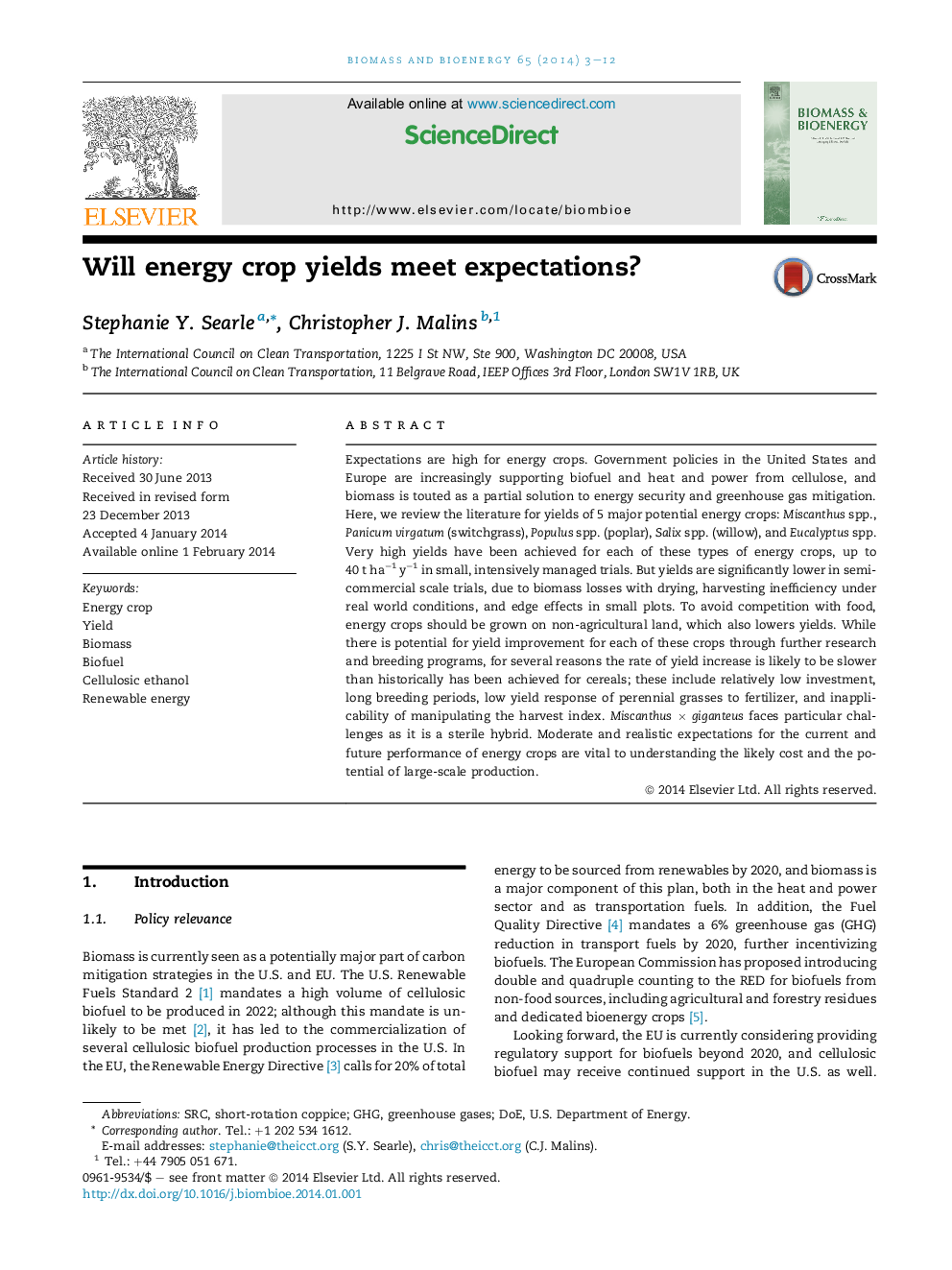| Article ID | Journal | Published Year | Pages | File Type |
|---|---|---|---|---|
| 7064824 | Biomass and Bioenergy | 2014 | 10 Pages |
Abstract
Expectations are high for energy crops. Government policies in the United States and Europe are increasingly supporting biofuel and heat and power from cellulose, and biomass is touted as a partial solution to energy security and greenhouse gas mitigation. Here, we review the literature for yields of 5 major potential energy crops: Miscanthus spp., Panicum virgatum (switchgrass), Populus spp. (poplar), Salix spp. (willow), and Eucalyptus spp. Very high yields have been achieved for each of these types of energy crops, up to 40 t haâ1 yâ1 in small, intensively managed trials. But yields are significantly lower in semi-commercial scale trials, due to biomass losses with drying, harvesting inefficiency under real world conditions, and edge effects in small plots. To avoid competition with food, energy crops should be grown on non-agricultural land, which also lowers yields. While there is potential for yield improvement for each of these crops through further research and breeding programs, for several reasons the rate of yield increase is likely to be slower than historically has been achieved for cereals; these include relatively low investment, long breeding periods, low yield response of perennial grasses to fertilizer, and inapplicability of manipulating the harvest index. Miscanthus à giganteus faces particular challenges as it is a sterile hybrid. Moderate and realistic expectations for the current and future performance of energy crops are vital to understanding the likely cost and the potential of large-scale production.
Keywords
Related Topics
Physical Sciences and Engineering
Chemical Engineering
Process Chemistry and Technology
Authors
Stephanie Y. Searle, Christopher J. Malins,
